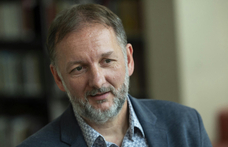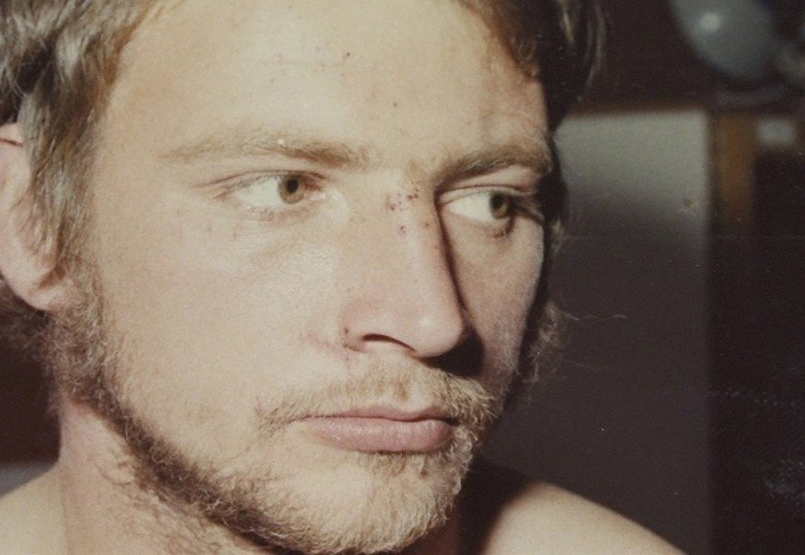It is hard to find a place without any bones, Ivan Vitanyi said recently. The Social Democrat-inclined Socialist MP's words can be seen as a warning to the newly elected party leader. After all, Ferenc Gyurcsany described the Socialist Party's move away from its Koztarsasag ter headquarters as a "symbolic gesture", saying that Vermezo ut (Field of Blood Street), which got its name from being the location where Ignac Martinovics and his comrades were executed, "can be accepted without reservations by the democratic Left."
This is going a bit far. "Field of blood, field of blood! How thirsty you were, able to drink so much blood in a single draught," sighed Sandor Petofi in August 1848 in his poem Vermezo, in which he traced the historical and philosophical roots of the March revolution to the Hungarian Jacobite conspiracy of half a century earlier. Admittedly, he cannot have known the full details of that conspiracy, since they were kept under lock and key in the imperial archive in Vienna. In his poem written against the King, Petofi lists the five martyrs who were beheaded on 20 May 1795: Ignac Martinovics, Jozsef Hajnoczy, Janos Laczkovics, Ferenc Szentmarjay and Jakab Sigray - a list that excludes Pal Oz and Ferenc Szolarcsik, who had been beheaded in the same place two weeks before.
For a long time, the conspirators "who had tried to snap the Hungarian nation's chains of bondage" were seen as martyrs to freedom. The sentence, handed down after a show trial, was intended as a warning to others, and King Francis I had the execution carried out in the most public way possible. But this backfired, as many contemporaries, including Ferenc Kazinczy, who was imprisoned for six years for his participation in the conspiracy, remembered. "The next day, roses grew in the place where they had been executed. The Hungarian community has called that place the Field of Blood since then, a place visited by fanatical lovers of freedom as part of their Calvary," as a four volume history wrote on the occasion of the Hungarian millennium.
But Centuries, a historical journal, seemed to ignore the kuruc tradition in 1877, when it portrayed Martinovics "in a different light from the traditional one", accusing him of "moral insanity." "It is a psychological impossibility that a man such as Martinovics could have raised himself to the level of martyr for his ideals," wrote Lajos Kossuth in a letter from exile. The man who spoke as the conscience of the nation accused the essay's author, a man in his 30s named Vilmos Fraknoi, of falsifying documents. Fraknoi admitted later that he was spurred to further research by this criticism. His situation was made easier by opening of the imperial archive after the collapse of the monarchy, and Fraknoi was able to turn not just to the records of the show trial to support his claims but also to the reports Martinovics made as an agent.
It would seem that the leader of the Hungarian Jacobines was driven not just by ideals and intellectual brilliance, but by careerism and mania. This Franciscan monk, who spoke several languages perfectly, was infected by the spirit of the "French poison" that spread at the end of the 18th century. But he expected a civic transformation to come from the monarch, which led him to sign up as an agent of Emperor Leopold in 1791. One historian writes that "like all paid spies he coloured and exaggerated" his detailed accounts of who said what at meetings of Hungarian secret societies. The emperor himself offered advice such as the following: "An uncultured people like the Hungarian nobility and priesthood has to be kept firmly in hand."
His career as an agent came to a quick end. When he ascended to the throne in 1792, Emperor Francis dispensed with his services. A disappointed Martinovics wrote a pamphlet under a pseudonym revealing that "the Austrian house has from the beginning concentrate ed its fury on crushing the Hungarian nobility." In May 1794 he started work on organising two secret societies, the Reformers and the Freedom and Equality society. Barely three months later, both organisations were liquidated. Martinovics, who was the first to be arrested, made a full confession, and as a token of his regret, he unmasked his fellow conspirators.
This was not enough to save his life, but his dignified behaviour at his execution made a greater impression on posterity. Petofi's poem inspired Gyula Krudy, Frigyes Karinthy and Jozsef Attila, who later moved to the extreme right, to further embellish the myth. The location was part of the exclusion zone around Buda Castle, and remained empty even in the middle of the 19th century, since it was used for military exercises. It continued to attract members of national movements. In June 1848, several battalions of the capital's national defence force swore to uphold Hungarian laws and serve the Batthyany government on Vermezo, and it was also there that Franz Josef held a parade in May 1896, and several days later in the same place, participants in the ceremonies to commemorate the Hungarian millennium were able to hear both the Gott Erhalte and the Rakoczi March. On 1 May 1919, the international workers' movement commemorated the deaths of two new martyrs, Karl Liebknecht and Rosa Luxemburg there. Just a year later, Miklos Horthy chose the same location to review his troops there.
And the symbolic importance of the place is shown by the opening passage of Dezso Kosztolanyi's novel Anna Edes, written in 1926, and set in the time of the Republic of Councils. In this book, the writer perpetuates the legend that people's commissioner Bela Kun fled the country in an aeroplane that he himself flew in a "bold swoop over towards Vermezo," and since he was only 20m up in the air, it could clearly be seen "how he laughed at the citizens standing below him." It was even implied that his pockets were stuffed with watches and jewels, "those of counts and barons, and the jewelry of good, charitable women." In the decades of Socialism, it was dubbed a novel of social sensibility - though this passage was censored. Nonetheless, it was still presumably as a result of Kosztolanyi's portrayal that on Bela Kun's 100th anniversary, in 1986, a monumental statue was erected to him on Vermezo, as if to counterbalance the novel's claim.
Imre Varga's work, which now rusts in the statue park, was born in peculiar circumstances. Geza Boros, the art historian who dug up the work's history, wrote in a study of seven years ago that the party leadership had decided to erect a statue to Kun, who fell victim to the Stalinist terror in 1937, which would be placed in Csepel. The assignment was awarded to Imre Varga, who had good relations with Gyorgy Aczel, the Minister of Culture, and who also served as an MP. The sculptor, however, agreed with the wishes of Kun's daughter Agnes that the statue should stand not in the outskirts but in the centre of town - on Vermezo, more precisely, which had been sanctified with the blood of the national heroes. The location was, according to Kun's family, "directly linked to the activities of the highest people's commissioner. It was here that the workers' battalions paraded before him before heading off to the front, and here that Kun gave his speech."
The statue was erected on 22 November 1986, but it had lost its political legitimacy within three years, and was removed. Intellectuals called it a "disgraceful sight." In 1995, its creator told the German art historian Christa Nickel that he thought nobody had noticed the "grimace" he had carved into the statue, since Varga said contradicting his earlier claims, "this was the first critical work in history." Although several studies have been devoted to the statue's birth and its ultimate fate, researches still do not realise that the link between Bela Kun and Vermezo was a stretch even in 1986. Party documents make it clear that the daily Red News reported on 8 July 1919 on the impressive Vermezo parade, but a closer reading makes it clear that the Bela Kun's speech to the "astonishingly disciplined proletarian regiments" in which he "urged them to unwavering struggle" was not given on Vermezo, but several hours earlier on the exercise field on Ulloi ut.
GÁBOR MURÁNYI














